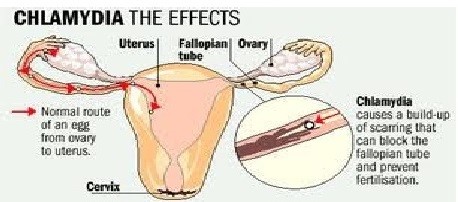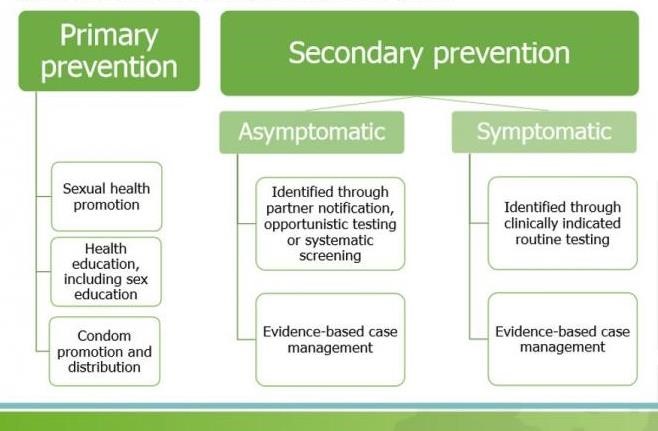What is chlamydia?
According to the Centers for Disease Control and Prevention (CDC, 2016), chlamydia is one of the common sexually transmitted infections (STIs). It is caused by Chlamydia trachomatis bacterium that damages women reproductive system. While the signs are mild, severe complications can lead to irreversible issues such as infertility. In addition, e Chlamydia may cause discharge from the male sexual organs.
Figure 1: Chlamydia Effects
Risk factors
Some of the factors that increases the risks of contracting chlamydia are; people below 24 years; engaging in unprotected sex; various sexual partners; and previous history of STIs.
Prevention
The effective approach of preventing transmission is abstaining from sexual behaviour or being involved in a monogamous relationship with uninfected partner. Male condoms if used correctly and consistently can significantly minimize the risks of transmitting chlamydia (CDC, 2016). Moreover, it is recommended for all active sexually female below 24 years to undertake annual screening for chlamydia. Older female with risk factors for this disease are required to undergo annual screening.
Pregnant women must also undergo screening. Screening is considered the best prevention approach since a number of reproductive complications associated with chlamydia are common among women and its symptomatic. Additionally, genital signs such as discharge, a rash, sores or burning sensation during urination is an indication to seek medical advice.
In the event that an individual has been treated for this disease or other types of STIs, he or she must notify their sex partner to be treated by a health care specialist. This is important, particularly, when it comes to minimizing the risk severe complications while reducing the chances of being re-infected. Such a person and his or her sexual partner must abstain from sex till they finish treatment.
Figure 2: Chlamydia Prevention
Prevention
The surest way to prevent chlamydia infection is to abstain from sexual activities. Short of that, you can:
- Use condoms. Use a male latex condom or a female polyurethane condom during each sexual contact. Condoms used properly during every sexual encounter reduce but don’t eliminate the risk of infection.
- Limit your number of sex partners. Having multiple sex partners puts you at a high risk of contracting chlamydia and other sexually transmitted infections.
- Get regular screenings. If you’re sexually active, particularly if you have multiple partners, talk with your doctor about how often you should be screened for chlamydia and other sexually transmitted infections.
- Avoid douching. Douching decreases the number of good bacteria in the vagina, which can increase the risk of infection.
Two-thirds of new chlamydial infections occur among youth aged 15-24 years.3 It is estimated that 1 in 20 sexually active young women aged 14-24 years are infected.
- More than 1 million sexually transmitted infections (STIs) are acquired every day worldwide (1, 2).
- Each year, there are an estimated 376 million new infections with 1 of 4 STIs: chlamydia, gonorrhoea, syphilis and trichomoniasis (1, 2).
- More than 500 million people are estimated to have genital infection with herpes simplex virus (HSV) (3).
- More than 290 million women have a human papillomavirus (HPV) infection (4).
- The majority of STIs have no symptoms or only mild symptoms that may not be recognized as an STI.
- STIs such as HSV type 2 and syphilis can increase the risk of HIV acquisition.
- 988 000 pregnant women were infected with syphilis in 2016, resulting in over 350 000 adverse birth outcomes including 200 000 stillbirths and newborn deaths (5).
- In some cases, STIs can have serious reproductive health consequences beyond the immediate impact of the infection itself (e.g., infertility or mother-to-child transmission)
- The Gonococcal Antimicrobial Resistance Surveillance Programme has shown high rates of quinolone resistance, increasing azithromycin resistance and emerging resistance to extended-spectrum cephalosporins. Drug resistance, especially for gonorrhoea, is a major threat to reducing the impact of STIs worldwide.
References
CDC (2016) Chlamydia – CDC Fact Sheet. Accessed 10th Sep 2016 from; http://www.cdc.gov/std/chlamydia/stdfact-chlamydia.htm
Want help to write your Essay or Assignments? Click here



